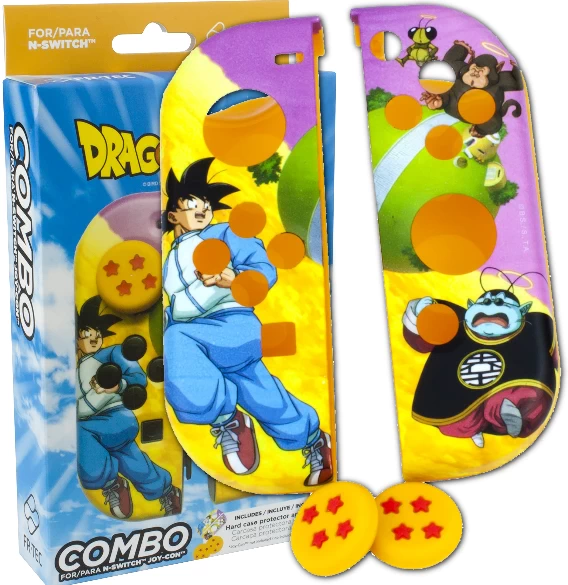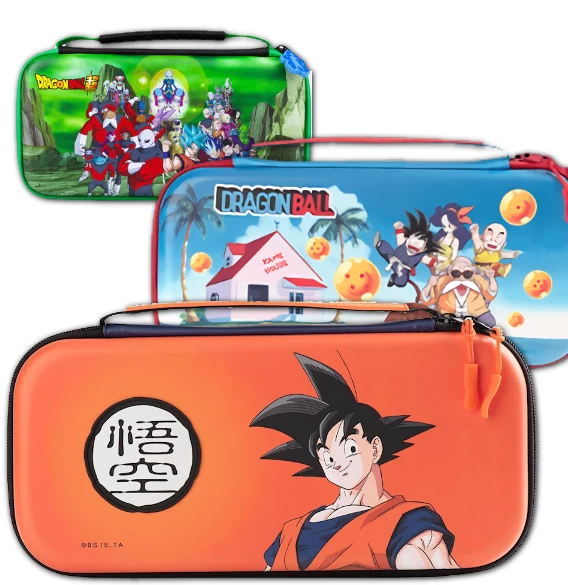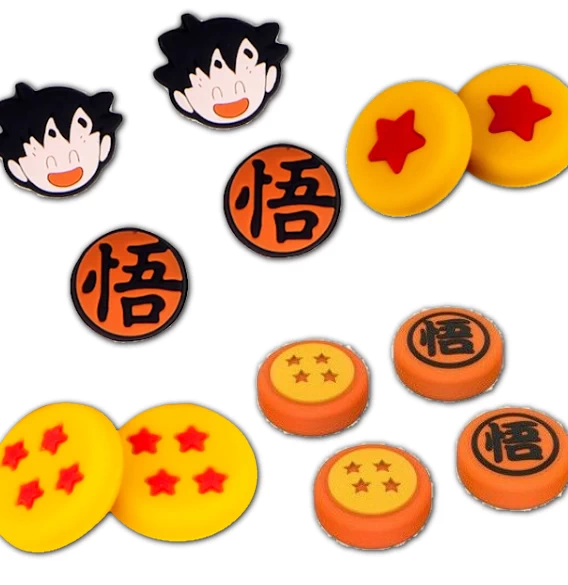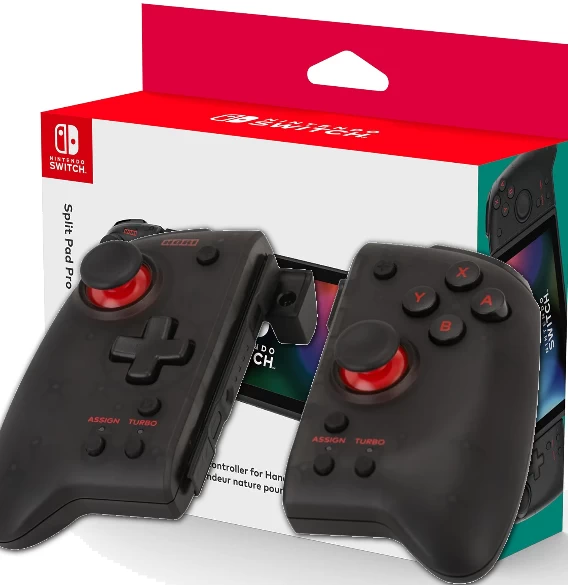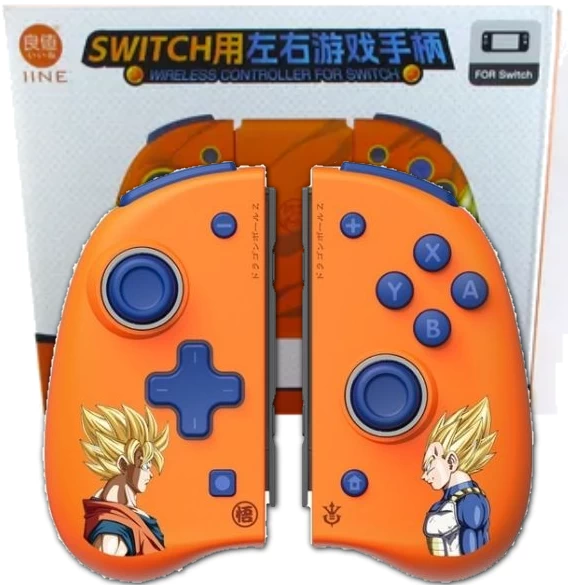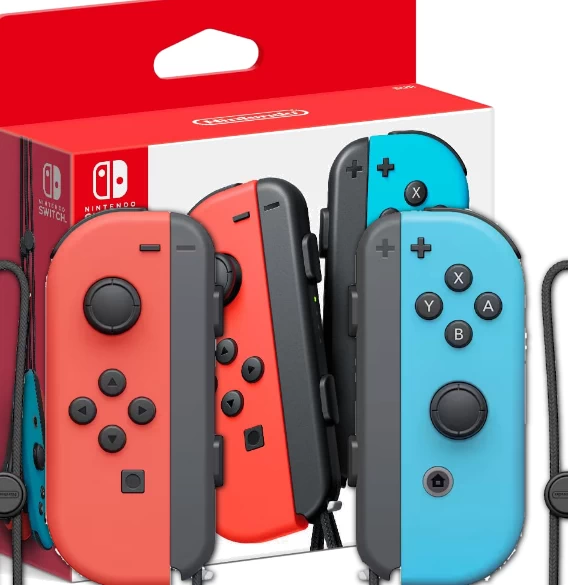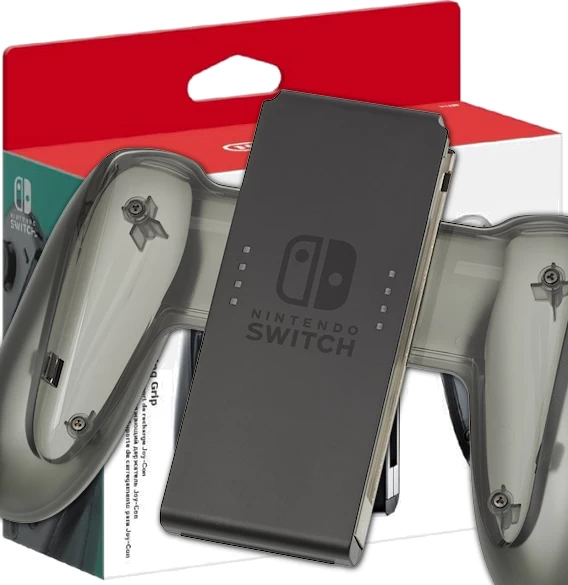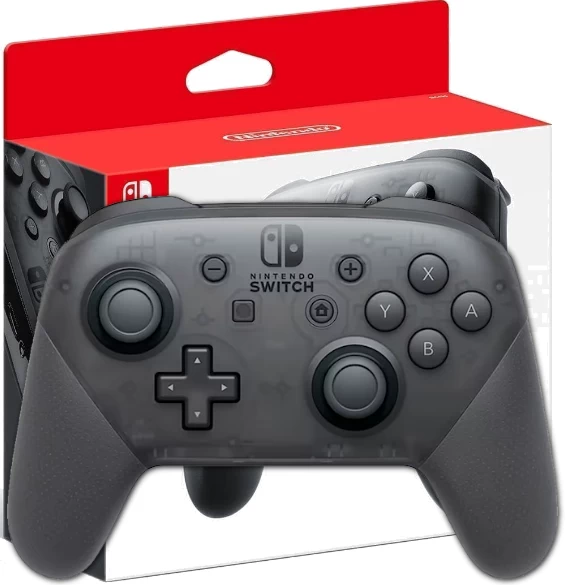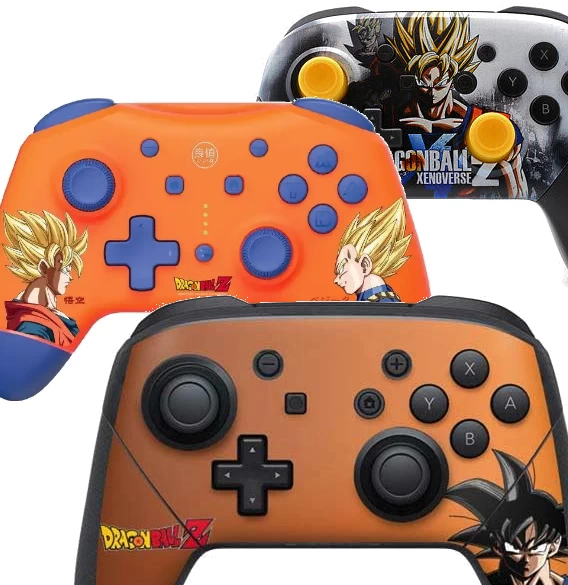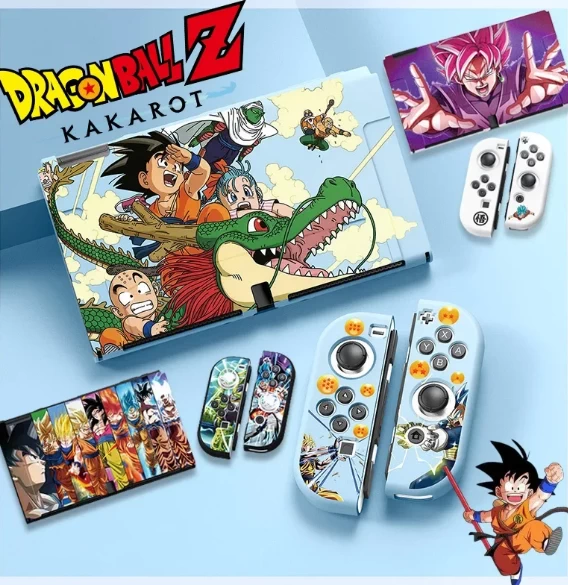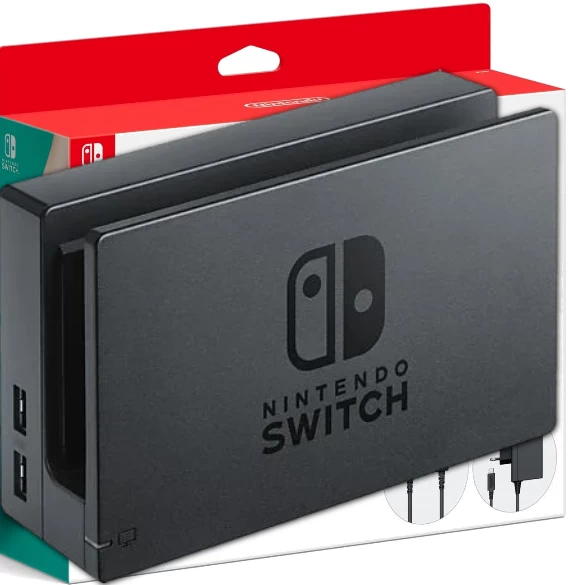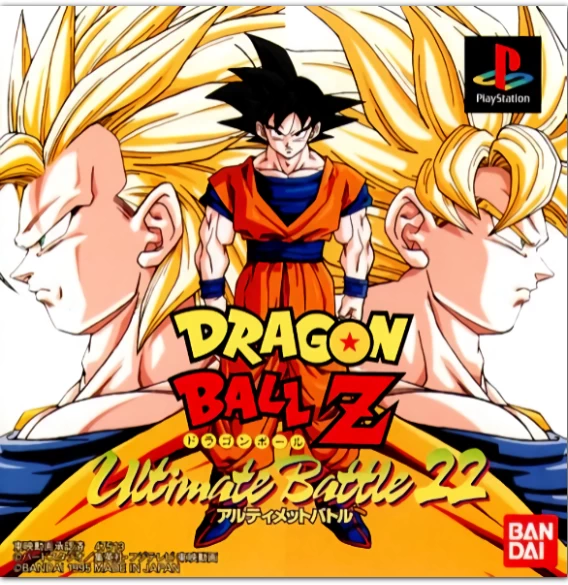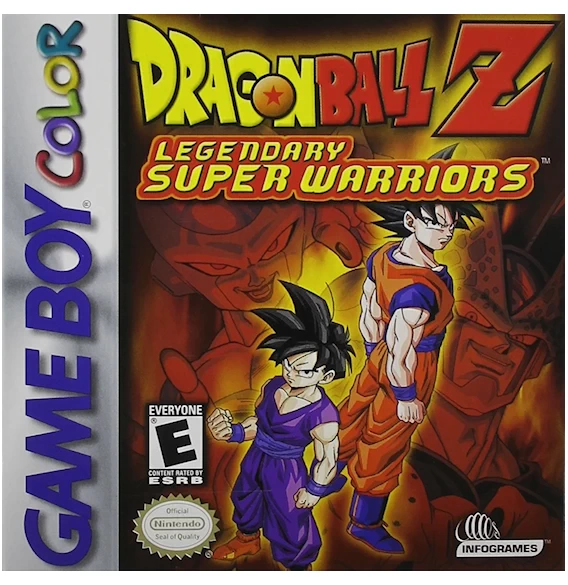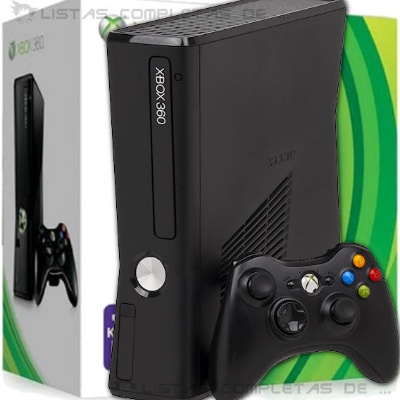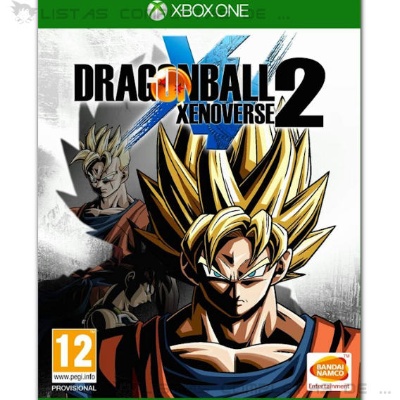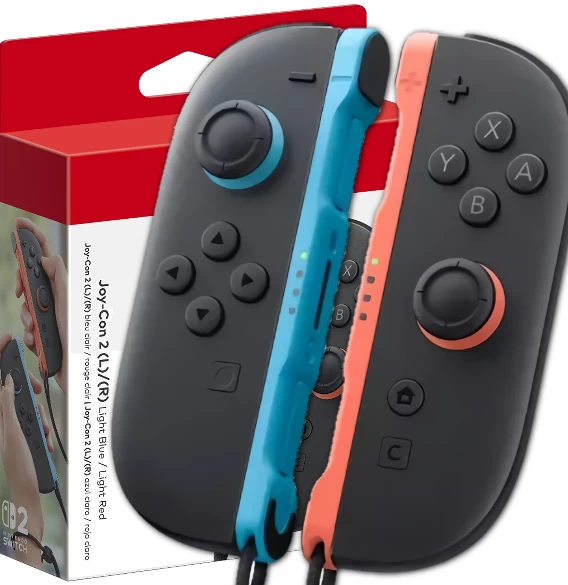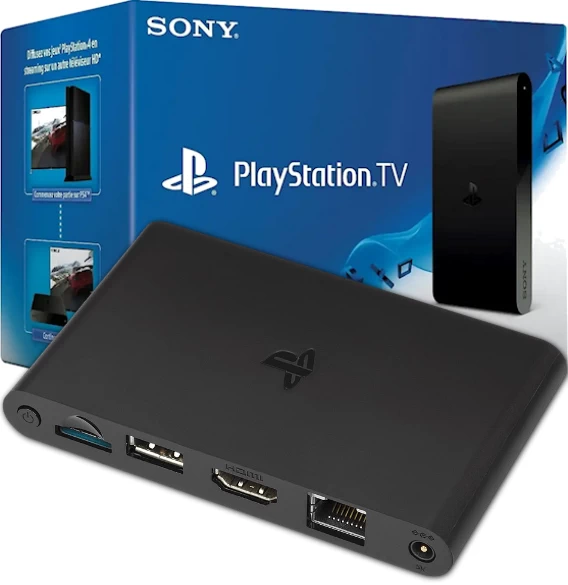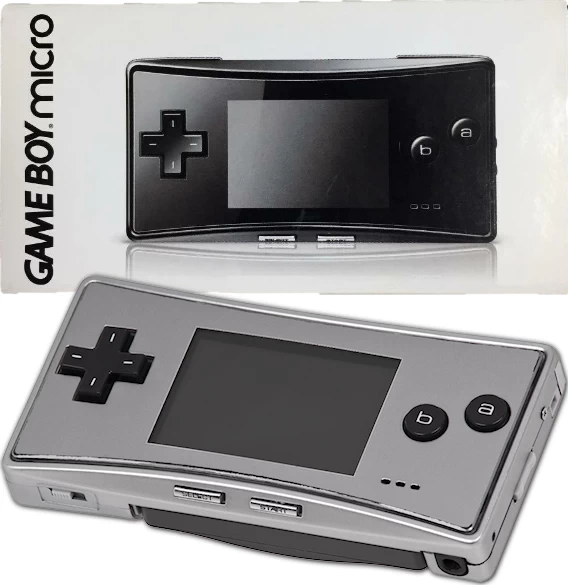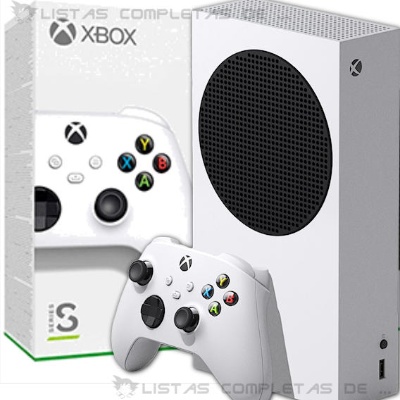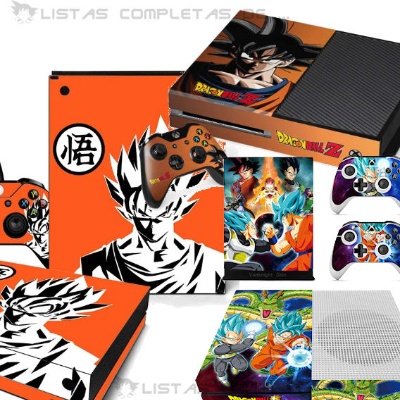All the Dragon Ball video games for the Nintendo Switch
The Nintendo Switch and the seven Dragon Ball games you can find for this console
Here We can find the Dragon Ball games released for the Switch, all the consoles and some of their peripherals
The Nintendo Switch arrived in 2017 to replace the Wii U and the Nintendo 3DS, as with this console the brand once again broke all established conventions, merging the handheld and home console concepts and bringing us the best of both worlds.
Some of the best Dragon Ball games have arrived on this console, such as Xenoverse 2 and Sparking! Zero. Here, we can see them all.
The 7 Dragon Ball and DBZ games released for the Switch, and their variants
A total of seven games have been released for this hybrid console (the Switch 1), spanning various genres: fighting, RPG, adventure, MOBA, survival, and card games. Many of them are multiplayer, with both PVP and co-op modes.
Among these games, we can find Kakarot, FighterZ, and even Sparking! Zero.
However, it must be said that it does not have any exclusive games that fully take advantage of its controls.
Remember: Physical games are not region-locked, but downloaded games will only be available in the store region where you purchase them on your console.
All the Season Pass, DLC's or Expansions for your Dragon Ball games released for the Switch
Find here all the DLCs and Season Passes released for Dragon Ball games on your Nintendo Switch. Take advantage and use the filter to see only the DLCs or Season Pass of the specific game.
Remember that DLCs / Seasons can only be purchased from the console's e-Shop, which is region-based, and that DLC or Season Pass will only be available for the region where you purchased it.
The different versions and models of the Nintendo Switch console
To play Nintendo Switch games, we need a console that supports these games, and for that purpose, Nintendo released these 4 consoles: the Original (or V1), the V2, the Lite, and the OLED.
The differences between the Nintendo Switch V1, the original, and the V2 are in their efficiency; the Lite does not allow TV connection or detachable controllers, and the OLED improves the screen, storage, and audio.
Accessories and peripherals of the Switch to be able to play Dragon Ball
To play properly, whether portable or docked, on our console you need certain accessories or peripherals, which usually come with the base console, such as Joy-Cons, the Joy-Con Grip, or the charging and connectivity Dock.
So, here is a list of accessories and peripherals we can get to play Dragon Ball games on our Nintendo Switch, including some specifically dedicated to our favorite anime.
More complete lists of Dragon Ball games and video games.
We also have more complete lists of Dragon Ball games and video games cataloged by their gaming platform, including Board Games, PlayStation, Nintendo NES, etc.
Here are some of the Dragon Ball games and video games we have for you:
Discover some of the Dragon Ball games, video games, consoles, and collectible accessories. From the iconic NES and GameBoy to the latest PC, PS5, and X-BOX titles, as well as the timeless board games.
Dragon Ball Z: Ultimate Battle 22
Dragon Ball Z: Ultimate Battle 22
Dragon Ball Z: Ultimate Battle 22 is the first Dragon Ball game released for the console in 1995, and it was an exclusive for the PS1.
It is a fighting game for 1 or 2 players (PvP), with 3D stages and characters made with 2D sprites.
The game is called 22 because it supposedly includes a total of 22 playable characters, but performing a key combination on the start screen unlocks 5 more characters, and the game becomes 'Ultimate Battle 27', now with 27 characters.
Among the 22 base characters are Super Boo, Cell, Freezer, Krillin, Vegeta…, and the 5 extra characters with the trick are: Kid Goku, Roshi, Satan, Goku SSJ3, and Gogeta.
The game does not have a story mode narrating the events of the Dragon Ball manga, but it includes characters from all DBZ sagas.
Although the sprites are decent for the time and there are many characters, the gameplay is said to leave much to be desired.
Dragon Ball Z: Legendary Super Warrior's
Dragon Ball Z: Legendary Super Warrior's
DBZ: Legendary Super Warrior's is an RPG/Strategy card battle game that covers the entire DBZ storyline, from the Saiyan Saga to the Majin Boo Saga. The game is compatible with 2 players via the Cable Link.
Xbox 360 S (Slim)
Xbox 360 S (Slim)
The Xbox 360 was Microsoft’s second console, and this is its fifth model, the ‘S’, released in mid 2010.
Description: A more compact and quieter redesign. Integrated Wi-Fi, dedicated Kinect port, and interchangeable hard drives ranging from 4 GB to 250 GB.
Differences compared to previous models: Smaller size, improved ventilation, greater energy efficiency, and native support for Kinect.
Dragon Ball Xenoverse 2
Dragon Ball Xenoverse 2
Dragon Ball Xenoverse 2 was released a little over a year after its predecessor, Xenoverse 1. Its story is set two years after the events of the previous game. In this installment, we take on the role of a Time Patroller, tasked with traveling through key moments in Dragon Ball history to fix distortions in the timeline.
It is a fighting game with multiplayer and competitive modes. The player must level up, learn techniques from Dragon Ball heroes, and customize their own character, even choosing their race.
The game was released on multiple platforms: PS4, Xbox One, Nintendo Switch, Stadia, Xbox Series X/S, and PS5.
It features numerous DLCs that expand the story, including content from Dragon Ball Super and Dragon Ball Daima.
PlayStation TV (PSVita TV)
PlayStation TV (PSVita TV)
The PS Vita TV or PlayStation TV is the latest version released of this console, characterized by having no screen, sound, or controls. It is essentially a mini-console with PS Vita technology, which we had to connect to the PC and use our DualShock 3 or 4 controllers to play on our TV. It is portable because it takes up no more space than a modern external hard drive.
Game Boy Micro
Game Boy Micro
The Game Boy Micro is the smallest and sleekest handheld in the series, featuring a bright, sharp screen. Perfect for gamers who want a retro gaming experience in an ultra-compact and portable design.
Xbox Series S
Xbox Series S
The Xbox Series S (512 GB) was the first model in the Series S line, released alongside the Series X on November 10, 2020. It was introduced as a more compact, digital, and affordable option for players who wanted to experience the new generation without a disc drive. Although it shares the same architecture as the Series X, it delivers lower performance (4 TFLOPS vs. 12) and targets a 1440p resolution, while maintaining ultra-fast load times thanks to its 512 GB SSD.
Compared to its bigger sibling, the Series S stands out for its smaller size, lower storage capacity, and lack of an optical drive, yet it still provides access to the entire new-generation library and backward-compatible titles.
For Dragon Ball fans, this console is a great choice to enjoy games like Xenoverse 2, Kakarot, or FighterZ digitally, offering solid performance and minimal loading times—perfect for those who value convenience without sacrificing the thrill of intense battles.
Sega Saturn 'Model 2' | EU
Sega Saturn 'Model 2' | EU
The European Sega Saturn Model 2 was released around 1996 as a more compact and affordable version of the original console. It still belonged to the fifth console generation, retaining 32-bit power and its specialty in 2D graphics, but with a lighter and simplified design, removing the disc drive access light and some buttons present in the first version.
It operated under the PAL (50 Hz) standard and, like the other versions, maintained regional limitations, so Japanese or North American discs were not compatible without adapters. This version helped reduce costs and improve durability, becoming the most common in Europe during the Saturn’s final years. That said, here are all the European versions.
Dragon Ball Xenoverse 2 | Collector’s Edition
Dragon Ball Xenoverse 2 | Collector’s Edition
Dragon Ball Xenoverse 2 Day One Edition is the collector’s edition of the game, released alongside the standard version. This edition is console-exclusive and was not released for PC.
This edition includes the following extras:
-
Full game in physical format.
-
Exclusive SteelBook case.
-
13-inch (approximately 33 cm) Super Saiyan Goku figure.
-
Time Patroller’s Guide, an art book that includes an exclusive manga illustrated by Toyotarou.
-
Official game soundtrack.
-
Collector’s box.

